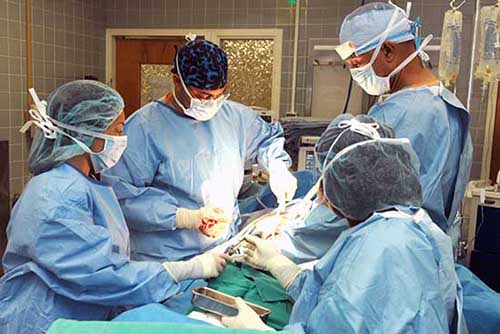

Surgery (cheirourgia, from the Greek "cheir" meaning "hand + "ergon" meaning "work") is the branch of medicine that deals with the physical manipulation of a bodily structure to diagnose, prevent, or cure an ailment. Ambroise Pare, a 16th-century French surgeon, stated that to perform surgery is: "To eliminate that which is superfluous, restore that which has been dislocated, separate that which has been united, join that which has been divided and repair the defects of nature."
Since humans first learned to make and handle tools, they have employed their talents to develop surgical techniques, each time more sophisticated than the last; however, until the industrial revolution, surgeons were incapable of overcoming the three principal obstacles which had plagued the medical profession from its infancy - bleeding, pain and infection. Advances in these fields have transformed surgery from a risky "art" into a scientific discipline capable of treating many diseases and conditions.
Archeological record Trepanation, broken bones, wounds.
ca 2613 to 2494 BCE a jaw found in a Fourth Dynasty tomb shows the marks of an operation to drain a pus-filled abscess under the first molar.
2580 BCE Khufu heard stories of Dedi's feats of surgery Dedi re-attaches the severed head of a goose with magic.
1772 BCE Code of Hammurabi
1550 BCE Ebers Papyrus
1250 BCE ? Asklepios his sons Podaleirius and Machaon reported by Homer as battlefield surgeons.
8th century BCE Homer reports; arrowheads cut out; styptics; administers sedatives and cuts bandaged with wool.
5th century BCE Medical schools at Cnidos and Cos
460 BCE Hippocrates insisted on the use of scientific methods in medicine. He "taught that wounds should be washed in water that had been boiled or filtered, and that a doctor's hands should be kept clean, his nails clipped short"
(?-c.1258) Hugh of Lucca (BIorgognoni, Ugo) . An Italian physician. He served as a military surgeon during the crusade to Syria and Egypt. His experience on the battlefield led him to believe that a large part of the brain could be removed without much functional loss.
c. 1900 Cargile membrane employed by surgeons.
1967: First successful heart transplant.
The first surgical techniques were developed to treat injuries and traumas. A combination of archaeological and anthropological studies offer insight into man's early techniques for suturing lacerations, amputating none salvageable limbs, and draining and cauterizing open wounds. Many examples exist: some Asian tribes used a mix of saltpeter and sulfur that was placed onto wounds and lit on fire to cauterize wounds; the Dakota Indians used the quill of a feather attached to an animal bladder to suck out purulent material; the discovery of needles from the stone age seem to suggest they were used in the suturing of cuts (the Maasai used needles of acacia for the same purpose); and tribes in India and South America developed an ingenious method of sealing minor injuries by applying termites or scarabs who ate around the edges of the wound and then twisted the insects neck leaving their heads rigidly attached like staples.
The oldest operation for which evidence exists is trepanation (also known as trepanning, trephination, trephining or burr hole) in which a hole is drilled or scraped into the skull for exposing the dura mater to treat health problems related to intracranial pressure and other diseases.
In the case of head wounds, surgical intervention was implemented for investigating and diagnosing the nature of the wound and the extent of the impact while bone splinters were removed preferably by scraping followed by post operation procedures and treatments for avoiding infection and aiding in the healing process.
Many prehistoric and premodern patients had signs of their skull structure healing, suggesting that many of those that proceeded with the surgery survived their operation. In some studies, the rate of survival surpassed 50%.
The Renaissance saw significant advances in anatomy and surgical technique. However, despite all this progress, surgery remained a treatment of last resort. Largely because of the associated pain, many patients with surgical disorders chose certain death rather than undergo surgery. Although there has been a great deal of debate as to who deserves the most credit for the discovery of general anesthesia, it is generally agreed that certain scientific discoveries in the late 18th and early 19th centuries were critical to the eventual introduction and development of modern anesthetic techniques.
Two "quantum leaps" occurred in the late 19th century, which together allowed the transition to modern surgery. An appreciation of the germ theory of disease led rapidly to the development and application of antiseptic techniques in surgery. Antisepsis, which soon gave way to asepsis, reduced the overall morbidity and mortality of surgery to a far more acceptable rate than in previous eras. Concurrent with these developments were the significant advances in pharmacology and physiology which led to the development of general anesthesia and the control of pain.
In the 20th century, the safety and efficacy of general anesthesia was improved by the routine use of tracheal intubation and other advanced airway management techniques. Significant advances in monitoring and new anesthetic agents with improved pharmacokinetic and pharmacodynamic characteristics also contributed to this trend. Finally, standardized training programs for anesthesiologists and nurse anesthetists emerged during this period. And, of course, the increased application of economic and business administration principles to health care in the late 20th and early 21st centuries inevitably led to the introduction of management practices such as transfer pricing to improve the efficiency of anesthesiologists. Read more ...
Herophilus advocated bloodletting. Archagathus, one of the first Greek physicians to practice in Rome, practiced bloodletting extensively and gained a most sanguinary reputation. The art of bloodletting became very popular in the West, and during the Renaissance one could find bloodletting calendars that recommended appropriate times to bloodlet during the year and books that claimed bloodletting would cure inflammation, infections, strokes, manic psychosis and more.
Ancient cranial surgery: bioarchaeologist studies trepanation PhysOrg - December 20, 2013
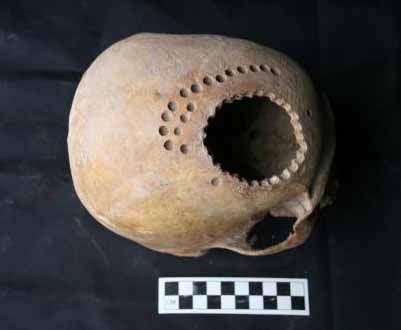
Some 900 years ago, a Peruvian healer used a hand drill to make dozens of small holes in a patient's skull. Cranial surgery is tricky business, even under 21st-century conditions (think aseptic environment, specialized surgical instruments and copious amounts of pain medication both during and afterward). However, evidence shows that healers in Peru practiced trepanation - a surgical procedure that involves removing a section of the cranial vault using a hand drill or a scraping tool more than 1,000 years ago to treat a variety of ailments, from head injuries to heartsickness. And they did so without the benefit of the aforementioned medical advances. Excavating burial caves in the south-central Andean province of Andahuaylas in Peru, UC Santa Barbara bioarchaeologist Danielle Kurin and her research team unearthed the remains of 32 individuals that date back to the Late Intermediate Period (ca. AD 1000-1250). Among them, 45 separate trepanation procedures were in evidence.
Evidence has been found in prehistoric human remains from Proto-Neolithic and Neolithic times, in cave paintings, and the procedure continued in use well into recorded history (being described by ancient Greek writers such as Hippocrates among others). Out of 120 prehistoric skulls found at one burial site in France dated to 6500 BCE, 40 had trepanation holes. Folke Henschen, a Swedish doctor and historian, asserts that Soviet excavations of the banks of the Dnieper River in the 1970s show the existence of trepanation in Mesolithic times dated to approximately 12000 BCE. The remains suggest a belief that trepanning could cure epileptic seizures, migraines, and mental disorders.
Examples of healed fractures in prehistoric human bones, suggesting setting and splinting have be found in the archeological record. Among some treatments used by the Aztecs, according to Spanish texts during the conquest of Mexico, was the reduction of fractured bones: "...the broken bone had to be splinted, extended and adjusted, and if this was not sufficient an incision was made at the end of the bone, and a branch of fir was inserted into the cavity of the medulla..." Modern medicine developed a technique similar to this in the 20th century known as medullary fixation.
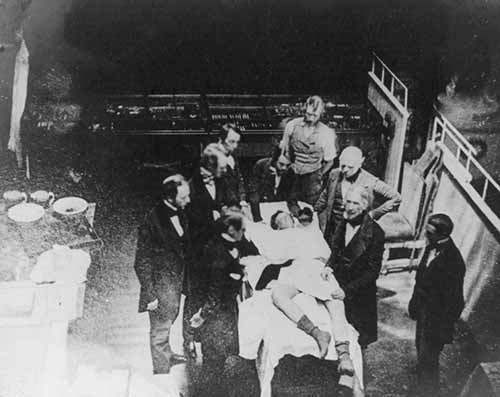
Attempts at producing a state of general anesthesia can be traced throughout recorded history in the writings of the ancient Sumerians, Babylonians, Assyrians, Egyptians, Greeks, Romans, Indians, and Chinese. During the Middle Ages, which correspond roughly to what is sometimes referred to as the Islamic Golden Age, scientists and other scholars made significant advances in science and medicine in the Muslim world and Eastern world, while their European counterparts also made important advances.
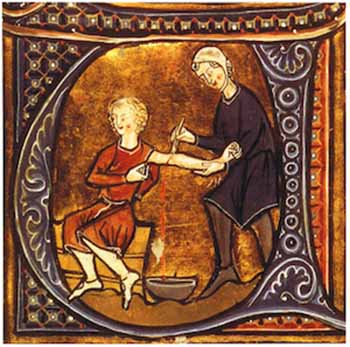
Bloodletting is one of the oldest medical practices, having been practiced among diverse ancient peoples, including the Mesopotamians, the Egyptians, the Greeks, the Mayans, and the Aztecs. In Greece, bloodletting was in use around the time of Hippocrates, who mentions bloodletting but in general relied on dietary techniques. Erasistratus, however, theorized that many diseases were caused by plethoras, or overabundances, in the blood, and advised that these plethoras be treated, initially, by exercise, sweating, reduced food intake, and vomiting.
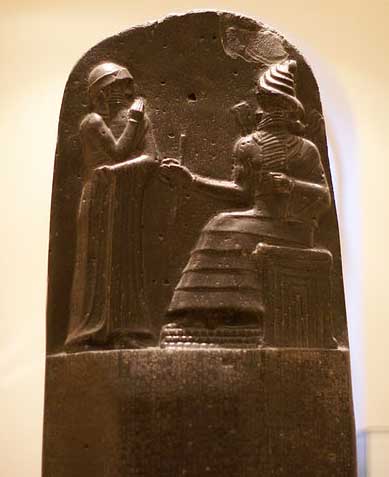
Berossus, a 3rd-century BCE Assyrian philosopher wrote considerably about the traditional Babylonian medical techniques (principally in the archives of Borsippa) and went on to assert that the god Oannes taught the Sumerian people all that was to be known about civilization and that nothing new had been invented. This assertion seemed hyperbolic until analysis of Sumerian tablets showed that the Mesopotamian civilization had developed or invented numerous medical techniques thousands of years before they were re-developed or re-invented by the Europeans.
Some 4000 BCE the Sumerian civilization was established in Mesopotamia between the Tigris and Euphrates rivers, creating the oldest form of writing, cuneiform. Of the 30,000 or so cuneiform tablets that have been discovered, about 800 of them deal with medical themes (one of these being the first prescription known to have been written). The name of the first surgeon is Urlugaledin, from the 4000 BCE, whose personal seal depicts two knives encircled by medicinal plants. This seal is now housed in the Louvre.
The Sumerians saw sickness as a divine punishment imposed by different demons when an individual broke a rule. For this reason, to be a physician, one had to learn to identify approximately 6,000 possible demons that might cause health problems. To do this, the Sumerians employed divining techniques based on the flight of birds, position of the stars and the livers of certain animals. In this way, medicine was intimately linked to priests, relegating surgery to a second-class medical specialty.
Nevertheless, the Sumerians developed several important medical techniques: in Ninevah archaeologists have discovered bronze instruments with sharpened obsidian resembling modern day scalpels, knives, trephines, etc. The Code of Hammurabi, one of the earliest Babylonian code of laws, itself contains specific legislation regulating surgeons and medical compensation as well as malpractice and victim's compensation:
215. If a physician make a large incision with an operating knife and cure it, or if he open a tumor (over the eye) with an operating knife, and saves the eye, he shall receive ten shekels in money.
217. If he be the slave of some one, his owner shall give the physician two shekels.
218. If a physician make a large incision with the operating knife, and kill him, or open a tumor with the operating knife, and cut out the eye, his hands shall be cut off.
220. If he had opened a tumor with the operating knife, and put out his eye, he shall pay half his value.
217. If he be the slave of some one, his owner shall give the physician two shekels.
218. If a physician make a large incision with the operating knife, and kill him, or open a tumor with the operating knife, and cut out the eye, his hands shall be cut off.
220. If he had opened a tumor with the operating knife, and put out his eye, he shall pay half his value.
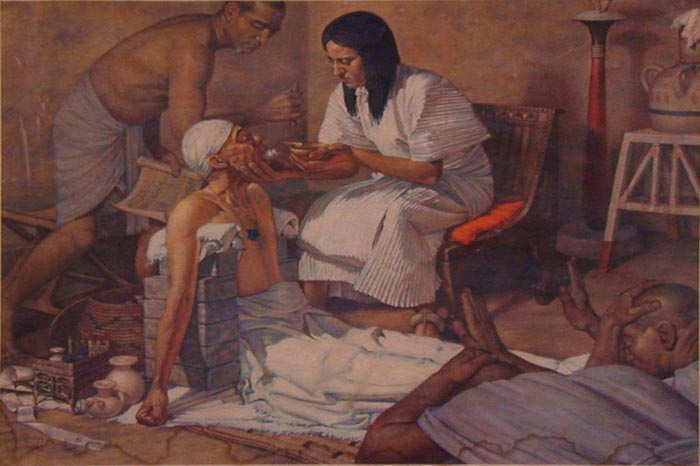
Around 3100 BCE Egyptian civilization began to flourish when Narmer, the first Pharaoh of Egypt, established the capital of Memphis. Just as cuneiform tablets preserved the knowledge of the ancient Sumerians, hieroglyphics preserved the Egyptian's.
In the first monarchic age (2700 BCE) the first treaty on surgery was written by Imhotep, the vizier of Pharaoh Djoser, priest, astronomer, physician and first notable architect. So much was he famed for his medical skill that he was deified, becoming the Egyptian god of medicine. Other famous physicians from the Ancient Empire (2500 - 2100 BCE) were Sachmet, the physician of Pharaoh Sahure and Nesmenau, whose office resembled that of a medical director.
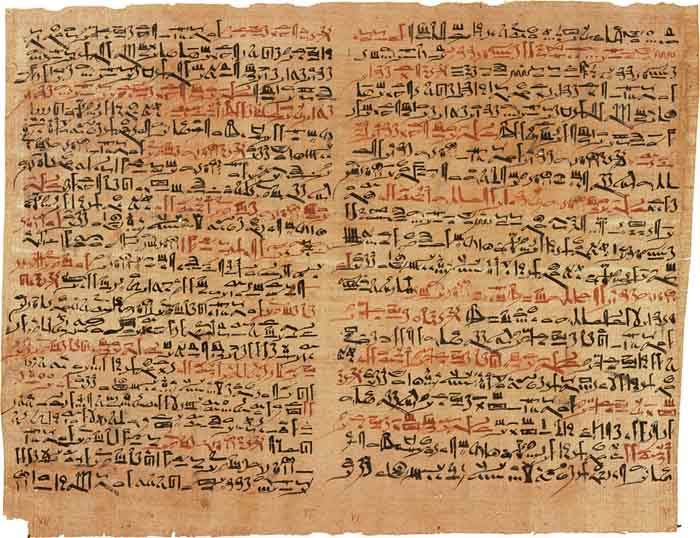
On one of the doorjambs of the entrance to the Temple of Memphis there is the oldest recorded engraving of a medical procedure: circumcision and engravings in Kom Ombo, Egypt depict surgical tools. Still of all the discoveries made in ancient Egypt, the most important discovery relating to ancient Egyptian knowledge of medicine is the Ebers Papyrus, named after its discoverer Georg Ebers. The Ebers Papyrus, conserved at the University of Leipzig, is considered one of the oldest treaties on medicine and the most important medical papyri. The text is dated to about 1550 BCE and measures 20 meters in length. The text includes recipes, a pharmacopoeia and descriptions of numerous diseases as well as cosmetic treatments. It mentions how to surgically treat crocodile bites and serious burns, recommending the drainage of pus-filled inflammation but warns against certain diseased skin.
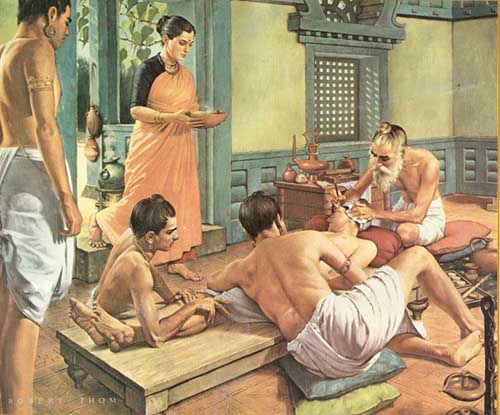
Archaeologists made the discovery that the people of Indus Valley Civilization, even from the early Harappan periods (c. 3300 BCE), had knowledge of medicine and dentistry. The physical anthropologist that carried out the examinations, Professor Andrea Cucina from the University of Missouri-Columbia, made the discovery when he was cleaning the teeth from one of the men. Later research in the same area found evidence of teeth having been drilled, dating back 9,000 years to 7000 BCE.
Sushruta (c. 600 BCE other dates range from 1000 BCE to 900 CE) was an early innovator of plastic surgery who taught and practiced surgery on the banks of the Ganges in the area that corresponds to the present day city of Benares in Northern India. Much of what is known about Sushruta is in Sanskrit contained in a series of volumes he authored, which are collectively known as the Susrutha Samhita. It is the oldest known surgical text and it describes in detail the examination, diagnosis, treatment, and prognosis of numerous ailments, as well as procedures on performing various forms of cosmetic surgery, plastic surgery and rhinoplasty.
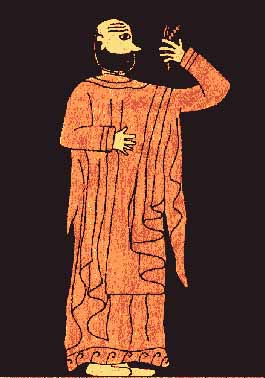
In ancient Greece, surgeons were considered to be specialized physicians, whereas in the early ancient Greek world a trained general physician had to use his hands to carry out all medical and medicinal processes including for example the treating of wounds sustained in the battle field, or the treatment of broken bones.
In "The Iliad" Homer names two doctors, “the two sons of Asklepios, the admirable physicians Podaleirius and Machaon and one acting doctor, Patroclus. Because Machaon is wounded and Podaleirius is in combat Eurypylus asks Patroclus “to cut out this arrow from my thigh, wash off the blood with warm water and spread soothing ointment on the wound.
The Hippocratic Oath, written in the 5th century BC provides the earliest protocol for professional conduct and ethical behavior a young physician needed to abide by in life and in treating and managing the health and privacy of his patients. The multiple volumes of the Hippocratic corpus and the Hippocratic Oath elevated and separated the standards of proper Hippocratic medical conduct and its fundamental medical and surgical principles from other practitioners of folk medicine often laden with superstitious constructs, and/or of specialists of sorts some of whom would endeavor to carry out invasive body procedures with dubious consequences, such as lithotomy. Works from the Hippocartic corpus include; On the Articulations or On Joints, On Fractures, On the Instruments of Reduction, The Physician's Establishment or Surgery, On Injuries of the Head, On Ulcers, On Fistulae, and On Hemorrhoids.
Herophilus of Chalcedon and Erasistratus of Ceos were two great Alexandrians who laid the foundations for the scientific study of anatomy and physiology. Alexandrian surgeons were responsible for developments in ligature (hemostasis), lithotomy, hernia operations, ophthalmic surgery, plastic surgery, methods of reduction of dislocations and fractures,tracheotomy, and mandrake as anesthesia. Most of what we know of them comes from Celsus and Galen of Pergamum.
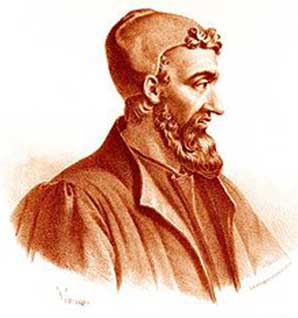
Galen, On the Natural Faculties, Books I, II, and III, is an excellent paradigm of a very accomplished Greek surgeon and physician of the Roman period (2nd century), who carried out very complex surgical operations and added significantly to the corpus of animal and human physiology and the art of surgery. He was one of the first to use ligatures in his experiments on animals. Galen is also known as "The king of the catgut suture".
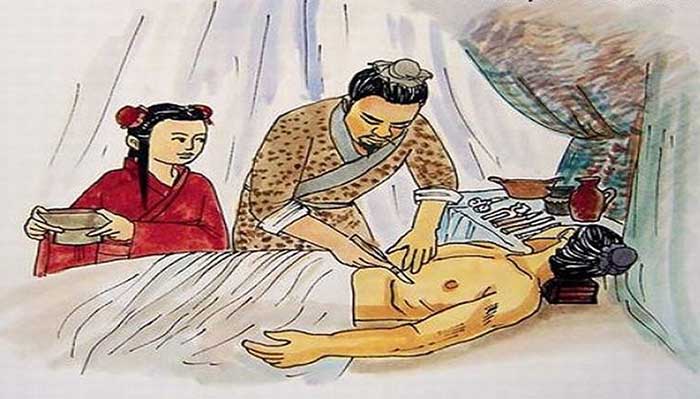
In ancient China, instruments resembling surgical tools have also been found in the archaeological sites of Bronze Age dating from the Shang Dynasty, along with seeds likely used for herbalism.
Hua Tuo was a famous Chinese physician during the Eastern Han and Three Kingdoms era. He was the first person to perform surgery with the aid of anesthesia, some 1600 years before the practice was adopted by Europeans. Bian Que (Pien Ch'iao) was a "miracle doctor" described by the Chinese historian Qima Nan in Shi Ji who was credited with many skills. Another book, Liezi (Lieh Tzu) describes that Bian Que conducted a two way exchange of hearts between people. This account also credited Bian Que with using general anaesthesia which would place it far before Hua Tuo, but the source in Liezi is questioned and the author may have been compiling stories from other works. Nonetheless, it establishes the concept of heart transplantation back to around 300 CE.
Chinese Archaeologists Find Evidence of Craniotomies 4,000 Years Ago -- July 30, 1999 - Xinhua News
Beijin - Chinese surgeons were able to perform a craniotomy, the surgical opening of the skull, which is difficult even in modern times, as early as 4,000 years ago. This is contrary to archaeologists' previous belief that the craniotomy was introduced to China by Arabs after the Tang Dynasty (618-907).
In the latest issue of the journal Archaeology, Han Kangxin and Chen Xingcan, of the Chinese Academy of Social Sciences' Institute of Archaeology, say that several ancient skulls with holes on them were discovered at sites in Qinghai, Henan, Heilongjiang provinces. Carbon dating indicates that the skull, which was found in a tomb in Minhe County in Qinghai, is the oldest to have had this operation in China and was from the later New Stone Age, about 4, 000 years ago. A large triangular cut can be found at the top of the skull with traces of scraping around it. There are also two sunken traces on the skull, which Han says might have been left by a strike from a certain instrument, causing a fracture and inflammation of the skull. There were some bony growths around the hole and the scraped traces are indistinct, he says, meaning that the patient survived for a period of time after the operation.
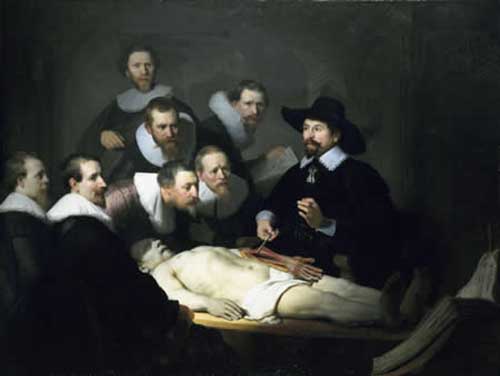
In Europe, the demand grew for surgeons to formally study for many years before practicing; universities such as Montpellier, Padua and Bologna were particularly renowned. Hugo of Lucca (1150-1257) founded the Bologna School and rejected "laudable pus". Guy de Chauliac (1298–1368) was one of the most eminent surgeons of the Middle Ages. His Chirurgia Magna or Great Surgery (1363) was a standard text for surgeons until well into the seventeenth century."
Abulcasis (Abu al-Qasim Khalaf ibn al-Abbas Al-Zahrawi) was an Andalusian-Arab physician and scientist who practiced in the Zahra suburb of Cordoba. He is considered a great medieval surgeon, whose comprehensive medical texts, combining Islamic medicine with Greco-Roman, shaped European surgical procedures until the Renaissance. Patients and students from all parts of Europe came to him for treatment and advice. According to Will Durant, Cordoba was in this period the favorite resort of Europeans for surgical operations.
In the 15th century, Rogerius Salernitanus composed his Chirurgia, laying the foundation for modern Western surgical manuals. Barber-surgeons generally had a bad reputation that was not to improve until the development of academic surgery as a specialty of medicine, rather than an accessory field.[36] Basic surgical principles for asepsis etc., are known as Halsteads principles. Roger seems to have been influenced more by the 6th-century AĎtius and Alexander of Tralles, and the 7th-century Paul of Aegina, than by the Arabs.Roland of Parma and Surgery of the Four Masters were responsible for spreading Roger's work to Italy, France, and England. Paul of Aegina's Pragmateia or Compendiem was highly influential. Abulcasis repeats the material, largely verbatim.
The discipline of surgery was put on a sound, scientific footing during the Age of Enlightenment in Europe. An important figure in this regard was the English surgical scientist, John Hunter, generally regarded as the father of modern scientific surgery. He brought an empirical and experimental approach to the science and was renowned around Europe for the quality of his research and his written works. Hunter reconstructed surgical knowledge from scratch; refusing to rely on the testimonies of others he conducted his own surgical experiments to determine the truth of the matter. To aid comparative analysis, he built up a collection of over 13,000 specimens of separate organ systems, from the simplest plants and animals to humans.
He greatly advanced knowledge of venereal disease and introduced many new techniques of surgery, including new methods for repairing damage to the Achilles tendon and a more effective method for applying ligature of the arteries in case of an aneurysm. He was also one of the first to understand the importance of pathology, the danger of the spread of infection and how the problem of inflammation of the wound, bone lesions and even tuberculosis often undid any benefit that was gained from the intervention. He consequently adopted the position that all surgical procedures should be used only as a last resort.
Other important 18th and early 19th century surgeons included Percival Pott (1713 -1788) who described tuberculosis on the spine and first demonstrated that a cancer may be caused by an environmental carcinogen - (he noticed a connection between chimney sweep's exposure to soot and their high incidence of scrotal cancer. Astley Paston Cooper (1768-1841) first performed a successful ligation of the abdominal aorta, and James Syme (1799-1870) pioneered the Symes Amputation for the ankle joint and successfully carried out the first hip disarticulation.
Modern pain control through anesthesia was discovered in the mid-19th century. Before the advent of anesthesia, surgery was a traumatically painful procedure and surgeons were encouraged to be as swift as possible to minimize patient suffering. This also meant that operations were largely restricted to amputations and external growth removals.
Beginning in the 1840s, surgery began to change dramatically in character with the discovery of effective and practical anesthetic chemicals such as ether, first used by the American surgeon Crawford Long, and chloroform, discovered by James Young Simpson and later pioneered by John Snow, physician to Queen Victoria. In addition to relieving patient suffering, anesthesia allowed more intricate operations in the internal regions of the human body. In addition, the discovery of muscle relaxants such as curare allowed for safer applications.
Unfortunately, the introduction of anesthetics encouraged more surgery, which inadvertently caused more dangerous patient post-operative infections. The concept of infection was unknown until relatively modern times. The first progress in combating infection was made in 1847 by the Hungarian doctor Ignaz Semmelweis who noticed that medical students fresh from the dissecting room were causing excess maternal death compared to midwives. Semmelweis, despite ridicule and opposition, introduced compulsory handwashing for everyone entering the maternal wards and was rewarded with a plunge in maternal and fetal deaths, however the Royal Society dismissed his advice.
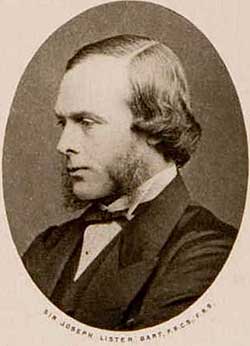
Until the pioneering work of British surgeon Joseph Lister in the 1860s, most medical men believed that chemical damage from exposures to bad air (see "miasma") was responsible for infections in wounds, and facilities for washing hands or a patient's wounds were not available. Lister became aware of the work of French chemist Louis Pasteur, who showed that rotting and fermentation could occur under anaerobic conditions if micro-organisms were present. Pasteur suggested three methods to eliminate the micro-organisms responsible for gangrene: filtration, exposure to heat, or exposure to chemical solutions.
Lister confirmed Pasteur's conclusions with his own experiments and decided to use his findings to develop antiseptic techniques for wounds. As the first two methods suggested by Pasteur were inappropriate for the treatment of human tissue, Lister experimented with the third, spraying carbolic acid on his instruments. He found that this remarkably reduced the incidence of gangrene and he published his results in The Lancet.
Later, on August 9, 1867, he read a paper before the British Medical Association in Dublin, on the Antiseptic Principle of the Practice of Surgery, which was reprinted in The British Medical Journal. His work was groundbreaking and laid the foundations for a rapid advance in infection control that saw modern antiseptic operating theatres widely used within 50 years.
Lister continued to develop improved methods of antisepsis and asepsis when he realized that infection could be better avoided by preventing bacteria from getting into wounds in the first place. This led to the rise of sterile surgery. Lister introduced the Steam Sterilizer to sterilize equipment, instituted rigorous hand washing and later implemented the wearing of rubber gloves. His discoveries paved the way for a dramatic expansion to the capabilities of the surgeon; for his contributions he is often regarded as the father of modern surgery. These three crucial advances - the adoption of a scientific methodology toward surgical operations, the use of anesthetic and the introduction of sterilized equipment - laid the groundwork for the modern invasive surgical techniques of today.
New developments in science and technology allow surgeons to heal patients in ways ancient doctors never could conceive. Everything in the fields of health moves forward rapidly - yesterday breakthroughs - ancient history tomorrow. If you follow science fiction, current methods of testing and healing may seem primitive, but we are advancing quickly.